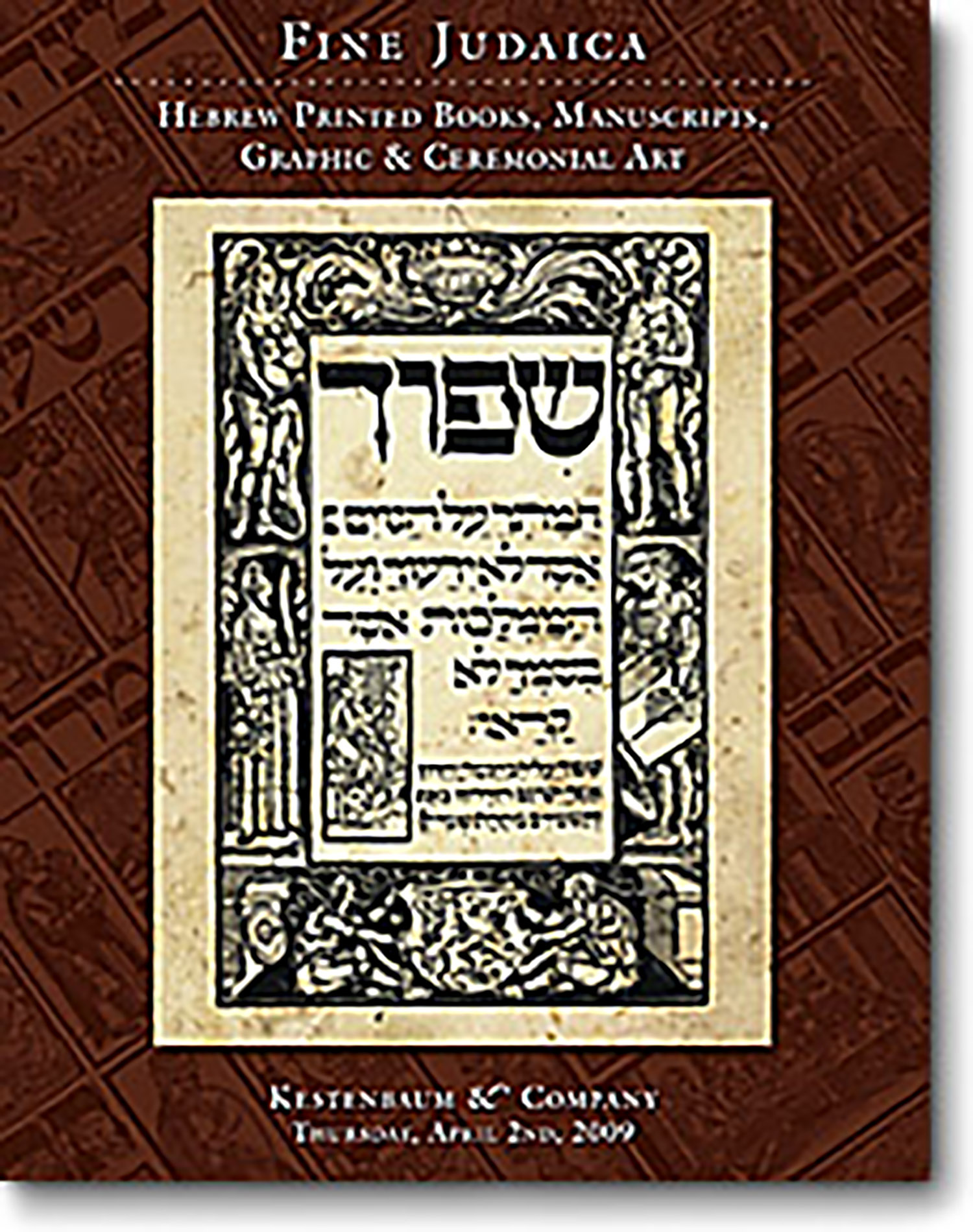Peirush ha-Torah [Commentary to the Pentateuch]

AUCTION 43 |
Thursday, April 02nd,
2009 at 1:00
Fine Judaica: Hebrew Printed Books, Manuscripts, Graphic & Ceremonial Art
Lot 38
ABRAHAM IBN EZRA.
Peirush ha-Torah [Commentary to the Pentateuch]
Naples: Joseph ben Jacob Aschkenazi Gunzenhauser & Son 1488
Est: $200,000 - $300,000
PRICE REALIZED $200,000
<<THE INTERNAL CONDITION OF THIS INCUNABLE MAY COMFORTABLY BE STATED AS BEING ONE OF THE VERY FINEST TO HAVE APPEARED AT AUCTION FOR A GREAT MANY DECADES.>>
It would be difficult to find a medieval sage as peripatetic as Abraham ibn Ezra (1089-1164). A native of Tudela, Spain, he lived at different times in North Africa, Italy, France, and England. Despite the maverick nature of his commentary - which does not accept rabbinic tradition uncritically - the author was revered throughout the ages. Ibn Ezra belonged to a school of Spanish pashtanim, who sought - by heavy reliance on Hebrew grammar and Semitic linguistic analysis - to arrive at the simple meaning of the Bible. In this respect, they differed greatly from the French school of Rashi and the Tosaphists, whose commentaries are informed by the midrashim of Rabbinic lore, and even from later Spanish exegetes, such as Nachmanides, whose commentary makes ample use of the Kabbalah or Jewish mysticism. In his purism, or perhaps reductionism, Ibn Ezra came into contact with the Karaite commentators, such as Japheth ben Ali, et al, who rejected outright the Rabbinic tradition. Nonetheless, time and time again Ibn Ezra concludes a discussion by commenting to the effect "that we rely on our tradition." Thus, after all of his forays into the uncharted world of peshat, ultimately, Ibn Ezra remains faithful to traditional Halacha.
The Gunzenhausers, pioneers in Hebrew printing, arrived in Naples from Gunzenhausen in Southern Germany. In Naples they established a press, assembled a talented team of typsetters and proof-readers, and between the years 1487-1492 produced in sum twelve books. After the death of Joseph Gunzenhauser in 1490, the press continued under his wife and son Azriel.
From the Library of the late Rabbi Y. Stern, London.
